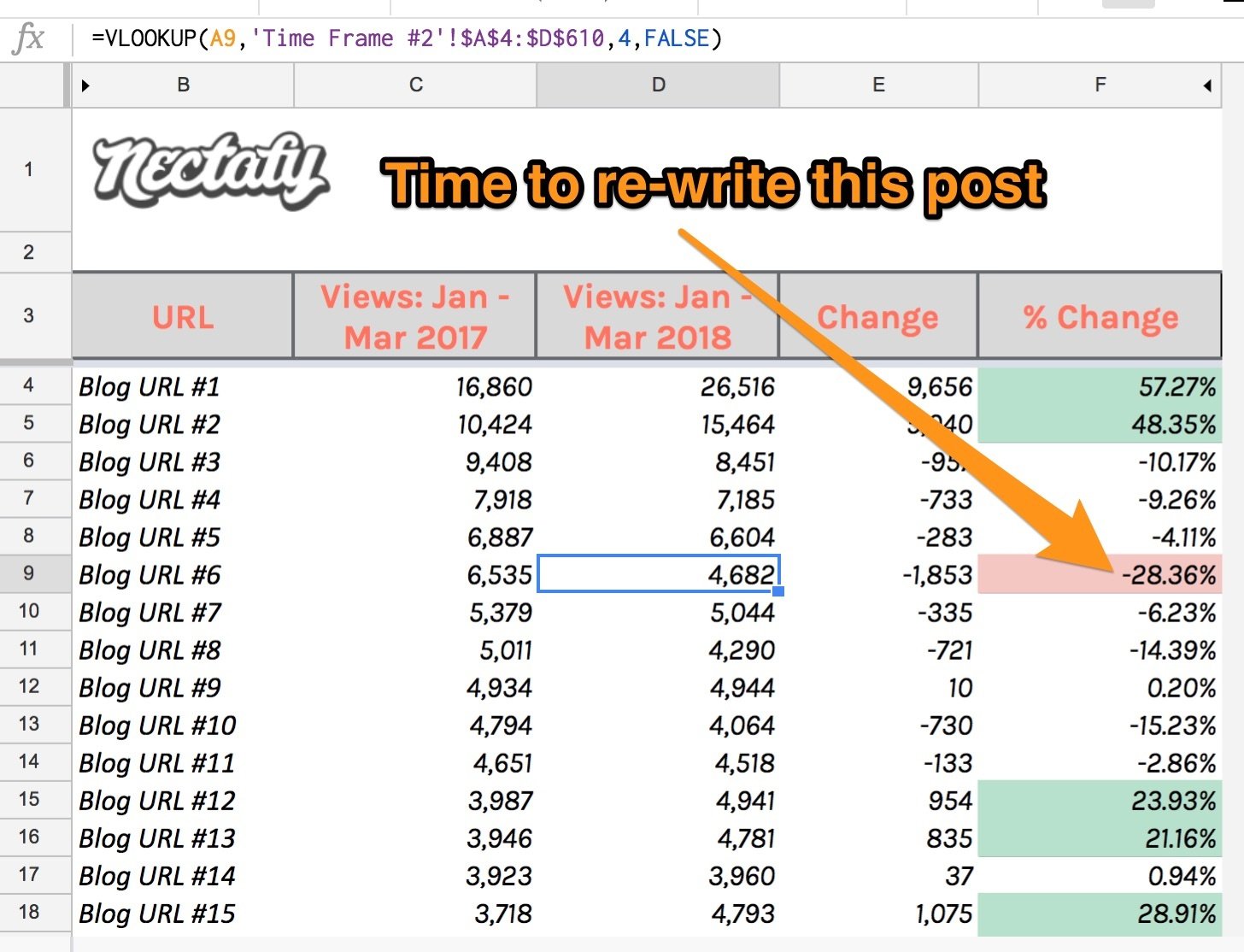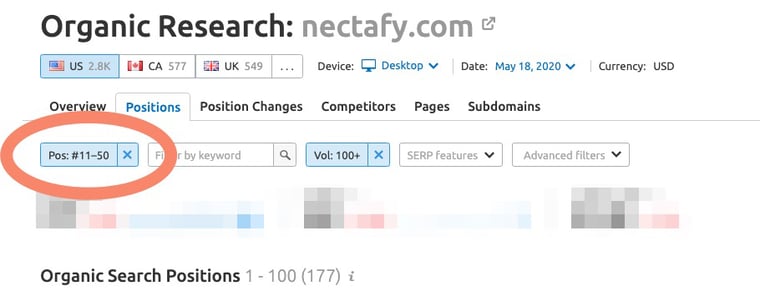3 Low-Effort/High-Impact Content Analyses You Should Be Running



Conventional wisdom says content marketers should track things like visits, leads, keywords, sales, etc. At Nectafy, we agree—you should be tracking these things at a macro level.
But here’s a secret: There are a few reports and analytics you can run right now to find big opportunities for bringing in leads and visitors that require only a small amount of work. In this article, we’re going to highlight three of them and show you how to do them on your own.
3 Quick Analyses To Increase Your Visits & Leads
1 Find declining blog posts; then rewrite to bring back thousands of visitors.
When you’re writing a lot of content, more than likely you’re focusing on total traffic across the board to see whether visits or leads are increasing. However, it’s important to look at growth patterns of individual posts to see which are growing in visits and which are declining (this is the analysis you’ll do.) You have a much greater chance to boost your visits and leads when you focus on rewriting declining posts.
Whether you have dozens or hundreds of posts, the process to fix the problem is the same: After you’ve identified which posts are decreasing, either rewrite them or add to them to bring back visitors you’ve been losing—plus new visitors. Maintaining your existing visitors plus bringing in new visits is how you grow quickly.

The Rewriting Process
Based on the audit, we then rewrite or add new sections to the articles identified, and republished them.
- If an article is outdated, rewrite it.
- If it isn’t outdated and still useful, refresh it by adding new content where necessary.
- Republish the article to the same URL with the new date.
For more details on this process, check out our post, How To Grow Website Traffic By 37% With Your Existing Blogs [DATA].
2 Analyze which pieces of content bring in more quality leads than other posts, and then write more on those topics.
If you grade the quality of your leads in any way (Tiers A, B, C), you can easily figure out which type of content brings in the most higher-tier leads. All you need is a HubSpot list and these two contact properties:
- Lead tier (if you don’t have this custom property, this strategy can also be done by replacing the lead tier property with the marketing qualified leads property)
- First page seen
For detailed steps on how to set this all up in HubSpot, take a look at this article.
To simplify the process, just download this nifty template—absolutely free.
Once your analysis is complete, the template will paint a clear picture of the number of leads by tier. You may notice trends—for example, one blog post may be bringing in highly qualified (Tier A) leads. If this is the case, you’ll want to write more about that particular topic, since it’s clearly attracting the type of leads you want.
If another blog post attracts Tier C leads (who aren’t taking any steps toward becoming a customer), you’ll likely want to stop writing about this topic, since it isn’t bringing in the people you want.
Getting a ton of contacts on your site isn’t helpful unless those contacts are the people you want to be doing business with. Doing this analysis lets you hone in on which blog topics are bringing in (or have the most potential to bring in) those quality leads.
3 Analyze which keywords are close to ranking but need a little push to make a big impact.
Whether you use SEMRush (which is what we use here at Nectafy), Ahrefs, Moz, or another keyword tracking tool, it's important to track keywords that are close to ranking on page one of Google. You should track this number during your content planning process or monthly reporting, whichever fits best in your process.
How To Find Close-To-Ranking Keywords
- Pull up all keywords ranking in spots 11-50 across your entire website (in other words, the keywords on pages two through five of Google).
- Analyze the list of keywords generated to find the best opportunities. These will be the keywords with the highest search volume; those that are closest to ranking on page one; and those that are most likely to bring in the right type of lead.
- With this data, you can add new content to existing posts that are ranking for those close-but-not-quite-page-one keywords and republish, hopefully moving closer to that first page of Google.

Making small changes based on data you’re probably already collecting is one of the best (and under-utilized) ways content marketers can maximize results from content they’ve already created.
What other small-but-powerful types of analyses do you perform? Leave a comment and let us know.

